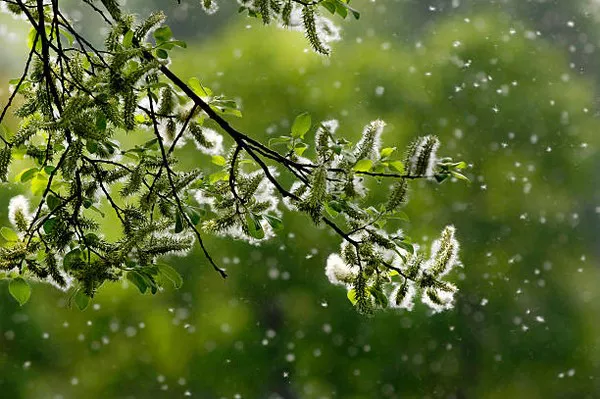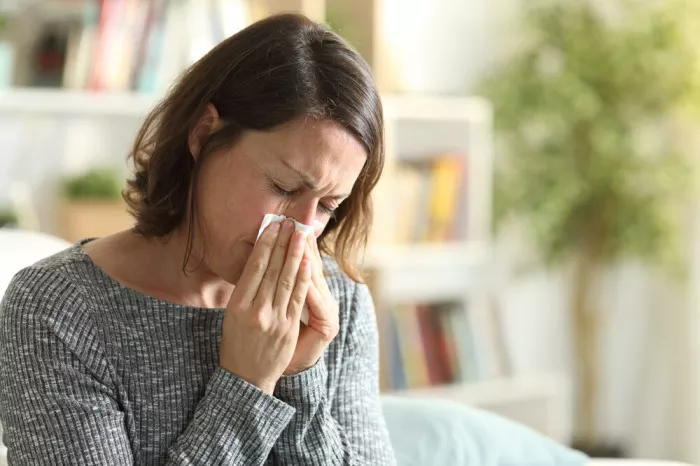Outdoor mold allergy, also known as mold-induced allergic rhinitis or mold allergy, is a common condition characterized by an allergic reaction to mold spores found in the outdoor environment. Mold allergies can cause a range of symptoms, from mild to severe, and can significantly impact an individual’s quality of life, particularly during peak mold seasons. In this comprehensive guide, we delve into the causes, symptoms, diagnosis, and management of outdoor mold allergy to help individuals better understand and navigate this condition.
Understanding Outdoor Mold Allergy: What Causes It?
Mold is a type of fungus that thrives in damp, humid environments, making outdoor spaces such as forests, gardens, and grassy areas ideal breeding grounds. Mold reproduces by releasing tiny spores into the air, which can become airborne and spread over long distances. When individuals with mold allergies inhale these spores, their immune systems perceive them as foreign invaders and launch an allergic response, triggering symptoms of allergy.
Common outdoor mold species that can trigger allergic reactions include Alternaria, Cladosporium, Aspergillus, and Penicillium. These molds are prevalent in outdoor environments and can be found on decaying vegetation, soil, compost piles, fallen leaves, and other organic matter.
Recognizing the Symptoms: Signs of Outdoor Mold Allergy
The symptoms of outdoor mold allergy can vary from person to person and may depend on factors such as the individual’s sensitivity to mold, the type of mold encountered, and the concentration of mold spores in the air. Common symptoms of outdoor mold allergy may include:
1. Sneezing
2. Runny or stuffy nose
3. Itchy, watery eyes
4. Nasal congestion
5. Postnasal drip
6. Coughing
7. Wheezing or difficulty breathing
8. Itchy throat or ears
9. Sinus pressure or headaches
10. Skin rash or hives (less common)
In severe cases, exposure to mold spores can trigger asthma symptoms or exacerbate existing respiratory conditions, leading to coughing, wheezing, chest tightness, and shortness of breath. Individuals with mold allergies may also experience worsening of symptoms during certain times of the year, such as late summer and early fall when mold spore levels are typically higher.
Diagnosis and Testing: How Is Outdoor Mold Allergy Diagnosed?
Diagnosing outdoor mold allergy typically involves a comprehensive evaluation by a healthcare provider, including a review of symptoms, medical history, and potential environmental triggers. While there are no specific laboratory tests to diagnose mold allergy, healthcare providers may use a combination of methods to assess allergic sensitization to mold, including:
Skin Prick Testing: Skin prick testing involves applying a small amount of mold extract to the skin and then pricking or scratching the skin to allow the allergen to enter. If an individual is allergic to mold, they may develop a localized allergic reaction, such as redness, swelling, or itching, at the site of the test.
Blood Tests: Blood tests, such as specific IgE antibody testing, can measure the levels of antibodies produced by the immune system in response to mold allergens. Elevated levels of mold-specific IgE antibodies may indicate allergic sensitization to mold.
Allergy Symptom Diary: Keeping a detailed diary of symptoms and potential triggers can help healthcare providers identify patterns and correlations between outdoor activities, environmental exposures, and allergy symptoms.
Based on the results of diagnostic testing and clinical evaluation, healthcare providers can make a diagnosis of outdoor mold allergy and develop an individualized treatment plan tailored to the individual’s needs.
Management and Treatment Options: Addressing Outdoor Mold Allergy
Managing outdoor mold allergy involves a combination of avoidance strategies, medication management, and environmental control measures to minimize exposure to mold spores and alleviate symptoms. Here are some common approaches to managing outdoor mold allergy:
Avoidance of Mold Exposure: Whenever possible, individuals with outdoor mold allergy should try to avoid or minimize exposure to mold spores by staying indoors during peak mold seasons, keeping windows and doors closed, using air conditioning with a high-efficiency particulate air (HEPA) filter, and avoiding outdoor activities that may stir up mold spores, such as gardening or yard work.
Medication Management: Over-the-counter (OTC) and prescription medications can help alleviate symptoms of outdoor mold allergy, including antihistamines to reduce sneezing, itching, and nasal congestion; decongestants to relieve nasal congestion; nasal corticosteroids to reduce inflammation and congestion; and leukotriene receptor antagonists to help control asthma symptoms.
Allergen Immunotherapy: Allergen immunotherapy, also known as allergy shots or allergy drops, may be recommended for individuals with severe or persistent outdoor mold allergy symptoms that are not adequately controlled with medication alone. Immunotherapy involves gradually exposing the individual to increasing doses of mold allergens to desensitize the immune system and reduce allergic reactions over time.
Environmental Control Measures: Taking steps to reduce indoor mold growth can help minimize exposure to mold spores and alleviate symptoms of outdoor mold allergy. This may include keeping indoor humidity levels below 50%, fixing leaks and water damage promptly, using exhaust fans in bathrooms and kitchens, and regularly cleaning and vacuuming indoor surfaces to remove mold spores and allergens.
Allergy Action Plan: Developing an allergy action plan in collaboration with a healthcare provider can help individuals with outdoor mold allergy manage their symptoms more effectively. An allergy action plan may include instructions for medication use, symptom management, emergency procedures, and follow-up care.
In Conclusion: Managing Outdoor Mold Allergy for Better Quality of Life
In conclusion, outdoor mold allergy is a common condition characterized by an allergic reaction to mold spores found in the outdoor environment. Mold allergies can cause a range of symptoms, from mild nasal congestion to severe asthma exacerbations, and can significantly impact an individual’s quality of life, particularly during peak mold seasons.
By understanding the causes, symptoms, diagnosis, and management options for outdoor mold allergy, individuals can take proactive steps to minimize exposure to mold spores, alleviate symptoms, and improve their overall well-being. With proper treatment and management, individuals with outdoor mold allergy can enjoy outdoor activities with greater comfort and confidence, even during allergy season.
[inline_related_posts title=”You Might Be Interested In” title_align=”left” style=”list” number=”6″ align=”none” ids=”7099,7041,7037″ by=”categories” orderby=”rand” order=”DESC” hide_thumb=”no” thumb_right=”no” views=”no” date=”yes” grid_columns=”2″ post_type=”” tax=””]

































